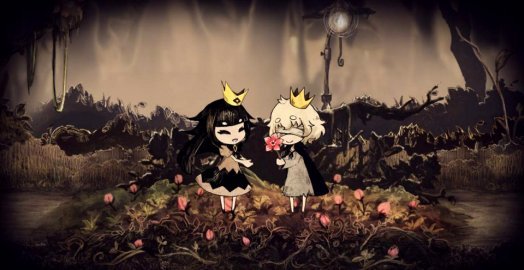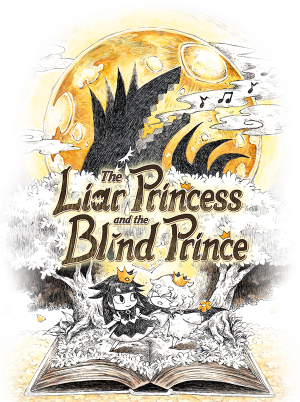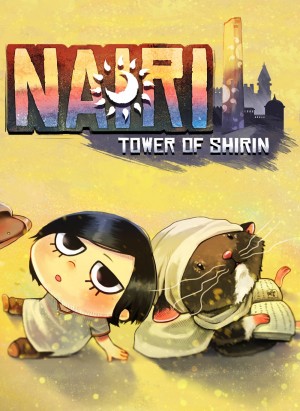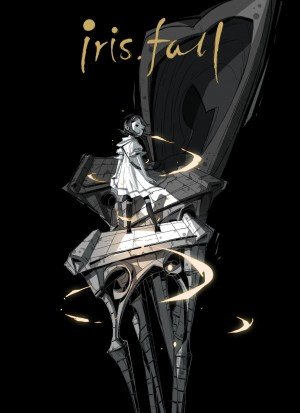Review for The Liar Princess and the Blind Prince

Nippon Ichi Software is a publishing giant well known to RPG enthusiasts worldwide. In 2018, however, the company opted for a change of pace when it released The Liar Princess and the Blind Prince into the Japanese market, and more recently on the international stage for the PlayStation 4. As much an interactive storybook as it is an actual game, there’s a sense of satisfaction to be found in the stylistic visuals and fairy tale vibe, but unfortunately the feeling isn’t much more than skin deep. With its no-frills gameplay and a premise that, at first blush, seems rather plodding and derivative, it lacks the charm one would expect to be generated by a fable about friendship and trust, though it does save its best for last.
It takes a good twenty minutes to get the story set up before finally starting out on level one, and yet for all the time taken introducing it, the narrative is anything but original. Every night, a young prince listens to a wolf’s beautiful moon song, captivated from afar, until he decides to climb up the hill after her song one night. Startled and frightened by the sudden appearance of a human, the wolf instinctively swipes her claws at the prince and inadvertently blinds him, sending the injured boy plummeting down. Feeling immediately guilty, the wolf visits the witch of the forest and makes a deal to gain the ability to change into a princess, sacrificing her beautiful singing voice in the bargain. Donning her human guise, the wolf must guide the blinded prince through the perilous woods to deliver him to the witch, who has promised to restore his lost eyesight.
If this sounds at all familiar, it’s probably because one of the few differences between the wolf’s deal and that of a certain red-haired mermaid is the fact that the wolf is able to transform into a princess and back again at will, switching forms on the fly in order to facilitate the gameplay. Along the way to the witch’s hut, more original story beats do occur as the duo meets other creatures of the forest, like a family of starving goats in desperate need of food, and a clan of moles eager to have some sweet-smelling flowers to dine on. However, the various asides fail to be of much interest, or add much substance to the narrative, instead continuously dragging the game’s already slow pace down even further.
The game is at its best when it focuses on the relationship between the prince and princess, particularly as you are keenly aware of the deception taking place. The prince is vulnerable and must be protected – and it’s her fault. She’s the one who made him this way and yet has to lie to him to keep his trust and help him. What begins as an act of atonement for the wolf’s guilty conscience slowly turns into her desperate struggle both to propagate the lie and keep the prince safe from harm. As the climax of the five-or-so-hour adventure approaches, you feel for both of them with the hardships they’re enduring, particularly the conflicted wolf who knows she’s pretending to be part of a world to which she just doesn’t belong. Even with all the pacing issues, when all is said and done their developing friendship has finally been given the spotlight it needs to end things on a satisfying note.
In terms of gameplay, there’s no way around summarizing The Liar Princess and the Blind Prince as one single, drawn-out escort mission stretched into a full-fledged adventure, though the tale’s thematic elements help overcome the feeling that you’re just there to babysit. In order for the prince to make it through each level, you have to literally make the pair hold hands by keeping a button continuously depressed on the controller. Separating and transforming into wolf form offers the only means of fighting back against the forest’s dastardly denizens, and adds improved jumping and resistance to fall damage in the process. But holding the prince’s hand to guide him – and later on issuing him simple commands such as moving a few feet forward or picking up an item – requires being in princess form. Both the prince and princess are wholly defenseless and fragile, and will die instantly after even a medium-sized drop or at the slightest enemy touch.
Most of the twenty levels consist of moving the pair left to right to reach the end, having the princess scout a few steps ahead, sometimes changing forms to deal with baddies by swiping at them with wolf-sized claws, then returning to pick up the prince and engage in some sort of puzzle-platforming that requires both characters to complete. Enemies generally go down in two or three hits, and only pose a light challenge if going for the pacifist trophies available on certain levels. Wolf form provides a nice safety buffer for the player, as she takes no damage either from enemies even when hit, or from falling from any height. But to move the prince along, she (and you) must continually give up these safeguards.
The game is split about 70/30 between 2D platforming and puzzle-solving, with the majority of its challenges incorporated into the former. Lighting torches to power up lifts, activating pressure plates, and reaching out-of-the-way levers to open a path forward are among the types of kinetic obstacles inherent to the experience. While most of these are rather simple, the handful of more traditional puzzles, such as solving a riddle to obtain a numeric code that unlocks a door blocking the way, are much more challenging, and in one (thankfully optional) case far too cryptic.
It’s hard to truly call the gameplay fun; the levels are often too brief for the designers to really capitalize on challenges tailored to the pair’s abilities. The wolf has her brawn, and the prince, limited as his physical form may be, is able to pick up and carry items, like a lantern to light torches or a rock that can be used to weigh down a pressure pad. Some control issues rear their ugly heads from time to time as well. Making sure that both characters safely perform each jump and stick the landing together can be tricky, so having the pair split apart by one making it onto a platform while the other just misses it occurred more than once during my playthrough. There are several checkpoints within levels, which are already rather short on their own, and one or both characters perishing restarts the pair at the most recent one.
The overall aesthetic is interesting and nicely executed in a heavily hand-drawn art style, with lots of muted colors for ambiance. This works well enough given the storybook fairy tale motif, with pages being turned during cutscenes, but there are a few odd choices here and there. During gameplay the viewable area is artificially reduced, with obscuring darkness creeping in at all four corners. The still-frame cinematic sections, meanwhile, are interspersed with scenes that are nothing but crude pencil sketches before returning to the familiar character models and backgrounds of the game. There seems to be no rhyme or reason to this, as it happens without warning or consistency, almost as if time ran out for the developers to complete these scenes and the temporary storyboards simply got left in. The unlockable art gallery even refers to them as “rough illustrations”.
The five different forest areas don’t really feature any standout locations or truly magical set pieces, though the backgrounds often incorporate fanciful plant life and other natural structures within them. With names like Azure Abyss and Witch’s Garden, a bit more sense of awe and wonder would have been welcome. Instead, levels like Radiant Floral Colony, Creamy Cotton Road, and Blue Ocean of Yore all look like very similar takes on the forest path theme.
Then there are the creature designs, which straddle the line between imaginative and simply out of place. All creatures have their bases in real-life animals, but with fantastical liberties taken. No one would guess that the slobbering bird-creature with a ghastly beak split apart like a flower in full bloom is meant to be a mole if the narrator didn’t tell you. The wolf looks the closest to her namesake, but try as I might, the fact that both of her eyes are on the same side of her body – on her neck rather than her head – was something I just never warmed up to. Of course, a fairy tale world does beg for artistic license, but in an experience this short, having immersion broken for any amount of time by bizarre inconsistencies is far too precious.
For the most part, the game’s audio choices are similar to everything else about it: middle of the road, neither amazing nor particularly bad. The Japanese narrator is the only voice actor and has a slow and deliberate line delivery that won’t do much for those not fluent in the language. The music tracks – a different one for each of the five distinct areas, and a few more odd scores – feature a heavy emphasis on instruments like flutes and xylophones, and the compositions have a slight Eastern flavor to them. They all sound good on their own merits, though the context in which they are used (two young kids exploring a trap-filled fairy tale forest) seems at odds with their actual musical style. However, a late-game highlight is an absolutely beautiful piece played at just the right emotional moment to really tug at the heartstrings.
While playing The Liar Princess and the Blind Prince, it is easy to be a little underwhelmed at any number of its individual design elements. From the times when it feels like the controls purposely sabotage your efforts to progress, to some design quirks that feel strangely out of place, to a narrative that threatens player interest by wresting away control (and withholding it right from the beginning) for lengthy cinematics, much of the experience translates to nothing more than mediocre. But to its credit, the overall presentation is quite distinct, and several powerful moments near the fairly-easy-to-reach ending ensure that it should leave a good taste in your mouth and give it a bit more staying power in your memory than it would otherwise have had. It won't wow you along the way, but for lovers of short and sweet stories about the power of friendship, the whole of this game may just add up to more than the sum of its parts.





























